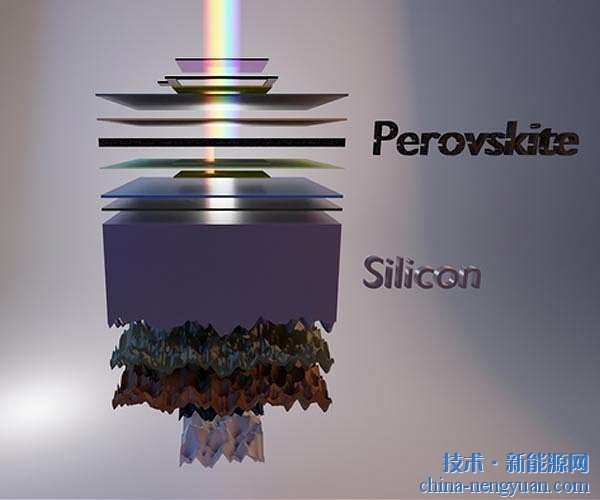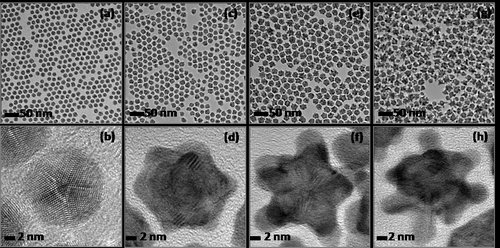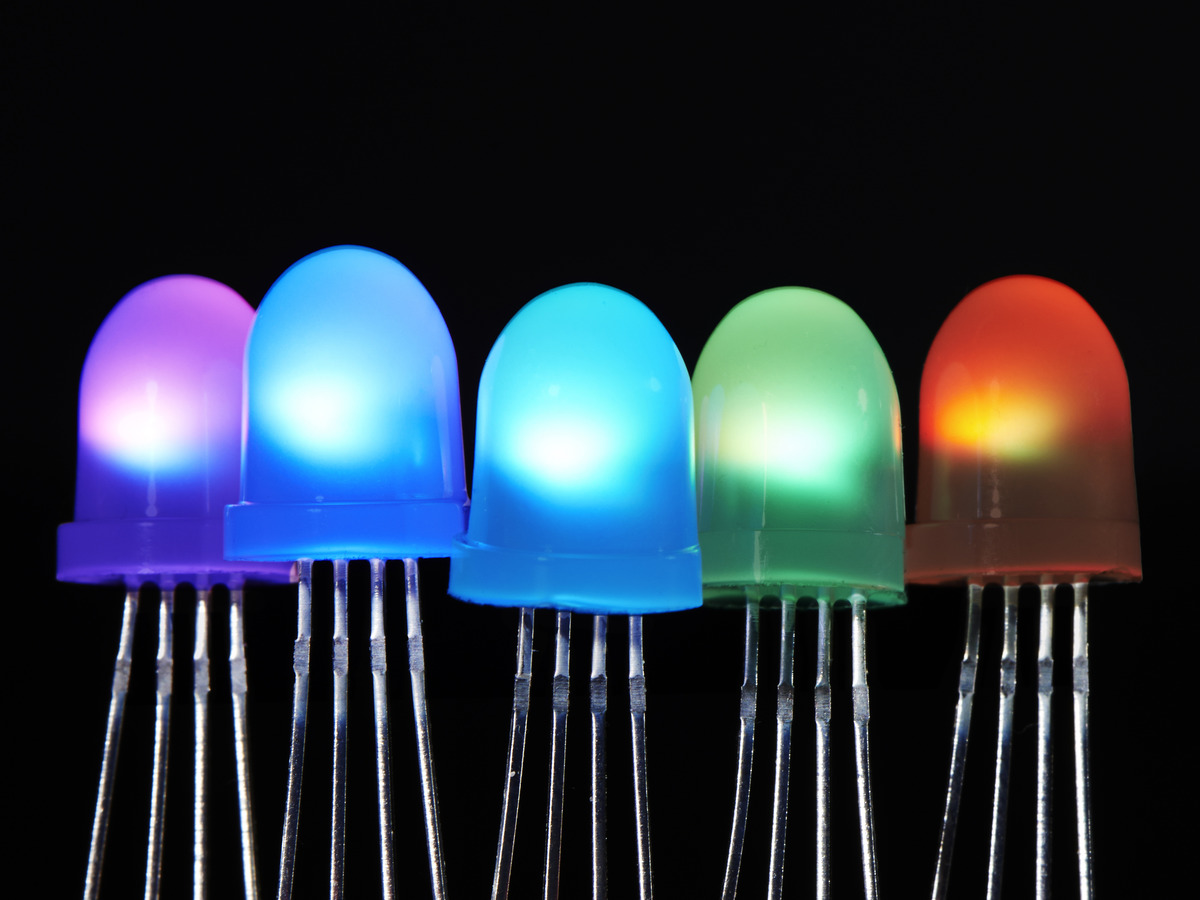 |
Figure 1: A schematic diagram showing the formation of star-shaped Ag-Pt bimetallic nanostructures. The competitive growth of platinum at different sites on silver twin particles leads to the final star-like morphology of the bicomponent nanoparticles.

Fig. 2: Transmission and high-resolution transmission electron microscopy (TEM) images showing the growth of Pt on Ag twin particles over time. Initially, only Ag particles are formed, but as time progresses, Pt begins to grow competitively at highly active sites, eventually forming a star-shaped Pt structure coated on the Ag core.
The unique properties of noble metal nanomaterials are closely tied to their surface morphology, composition, and internal structure. Beyond the basic characteristics of nanoparticles, dual-component noble metal materials with complex structures also exhibit effects such as electron coupling and lattice strain due to their internal configuration. These factors influence the overall morphology and performance of the nanomaterials, offering new possibilities for precise control and multifunctional applications.
Recently, a research team led by Yang Jun from the State Key Laboratory of Multiphase Complex Systems at the Institute of Process Engineering, Chinese Academy of Sciences, successfully developed a star-shaped Ag-Pt bimetallic heterostructure nanomaterial. This material is formed through the competitive growth of Pt along the grain boundaries of multiple twin Ag particles.
This method can be further extended to selectively remove the Ag core, resulting in hollow Pt nanoparticles with a star-like shape. The unique structure of these nanoparticles contains numerous highly active Pt step and corner atoms, as well as a highly active Pt{111} crystal plane. Additionally, it benefits from an adjustable electronic coupling effect between the Ag core and the Pt shell. These features contribute to excellent catalytic performance in methanol oxidation and oxygen reduction reactions. The findings were published in *Scientific Reports* (2014, 4, 3969/1–3969/7).
Further studies have shown that replacing Au particles with twinned Au cores can lead to a more general approach for synthesizing binary dendritic heterostructures, such as Au-Pt, Au-Pd, Au-Ru, and Au-Ir. This work was featured in the *2014 Emerging Investigators Themed Issue* of *Journal of Materials Chemistry A* (2014, 2, 6130–6137).
This research has been supported by the National Key Laboratory Fund for the Multiphase Complex System, the Hundred Talents Program, the National Natural Science Foundation, and the Institute of Process Engineering.
8mm RGB LED can work like a white LED. Because there have red, green and blue LED chip together inside the 8mm LED package. As we know, these are the three primary colors of light. With three of these color, the through-hole LED will be able to emits any kind of color. As long we can control those 4 pins on the bottom of through-hole LED by operation current. So we can also emit the white color from this RGB LED.
Then what is the difference between 8mm RGB LED and the White LED?
White light LED is obviously inferior to 8mm RGB LED in clarity and color purity. In addition, the problem of light attenuation makes 8mm RGB LED more advantageous.
Although expensive, but relatively speaking, the quality is better.
For the 8mm RGB LED, the lens can be 8mm round RGB LED, 8mm Straw hat RGB LED, 8mm pointed top RGB LED and 8mm round LED without flange RGB LED.
And the color of lens can be water clear or diffused(some people also name it as milky lens). The former has a strong spotlight, and the later lens will make people feels soft.

RGB LED, 8mm RGB LED, DIP RGB LED, RGB Standard LEDs, rgb led through hole
Shenzhen Best LED Opto-electronic Co.,Ltd / BESTSMD CO LIMITED(HK) , https://www.bestsmd.com